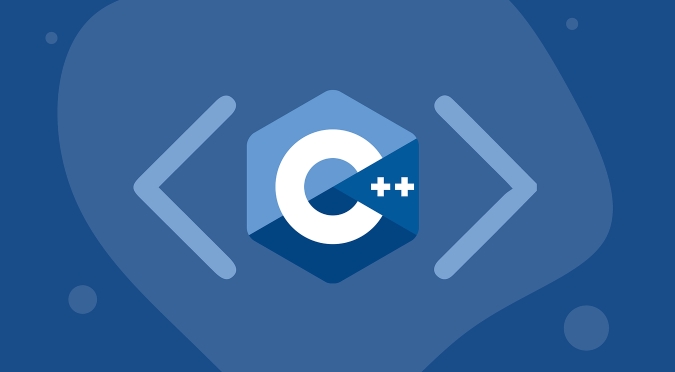SFINAE (Replacement failure is not an error) is used to exclude mismatched types when instantiating templates. The core is that when type replacement fails, the compiler does not report an error but ignores the template. For example, when accessing T::value_type does not exist, only the template is excluded. The uses include function overload selection and feature detection, such as determining whether there is a size() method. The implementation technique is to use std::enable_if to limit template parameters, and encapsulation type features improve readability. Concepts introduced by C 20 provides a clearer alternative, but SFINAE is still indispensable in older versions.

SFINAE is an important concept in C template programming, and its full name is Substitution Failure Is Not An Error . Simply put, during the template instantiation process, if a certain type replacement fails, the compiler will not directly report an error, but will quietly exclude the template from the candidate list.

This is very useful when writing generic code, especially when doing type judgment, overload selection or feature detection.

What is "replacement failure"?
Let's first look at a common example:
template <typename T> typename T::value_type get_value(const T& container);
Here we are trying to access T::value_type . If the incoming T is std::vector<int> , no problem; but if the incoming is int , there will be a "replacement failure" - because int::value_type does not exist.

In this case, according to the SFINAE rules, the compiler will not report an error, but just exclude this template.
What is SFINAE's practical use?
The most common use of SFINAE is to make conditional judgments in function overloading or template specialization. For example, we can decide which version of the function to call based on whether the type has a member function.
For example, to determine whether there is a method called size() to determine whether the type is:
template <typename T>
auto has_size_method(T* ptr, ...) -> std::false_type;
template <typename T>
auto has_size_method(T* ptr, int) -> decltype(ptr->size(), std::true_type{}); Two function templates are used here. The second template uses decltype and the expression ptr->size() . If this expression is legal, the match will be successful; otherwise, the replacement will fail, and the first version will be selected second.
This technique is widely used in standard libraries and modern C code to implement metaprogramming tools such as enable_if and is_detected .
How to write clearer SFINAE code?
Priority to use
std::enable_if: This is an auxiliary tool provided by the standard library, which allows you to add conditions to template parameters.template <typename T, typename std::enable_if<std::is_integral<T>::value, int>::type = 0> void foo(T x); // Only accept integer typesAvoid overly complex expressions : Too long SFINAE conditions can make the code difficult to maintain. It can be encapsulated into type traits to multiplex and simplify logic.
Pay attention to priority and readability : When multiple SFINAE conditions are superimposed, ensure that the order is reasonable and the logic is clear.
SFINAE limitations and alternatives
Although SFINAE is very powerful, it is easy to write and complicated to debug. C 20 introduces Concepts , a clearer, more semantic way to limit template parameters.
For example, use Concepts to implement the above example:
template <typename T>
concept HasSizeMethod = requires(T t) {
t.size();
};
template <HasSizeMethod T>
void bar(const T& container);This method is more intuitive and easier to understand than traditional SFINAE.
However, SFINAE is still an indispensable tool in projects like C 17 or earlier.
Basically that's it. Mastering SFINAE can help you write more flexible and general template code, but don't overuse it, keeping it clear is the key.
The above is the detailed content of What is SFINAE in C ?. For more information, please follow other related articles on the PHP Chinese website!

Hot AI Tools

Undress AI Tool
Undress images for free

Undresser.AI Undress
AI-powered app for creating realistic nude photos

AI Clothes Remover
Online AI tool for removing clothes from photos.

Clothoff.io
AI clothes remover

Video Face Swap
Swap faces in any video effortlessly with our completely free AI face swap tool!

Hot Article

Hot Tools

Notepad++7.3.1
Easy-to-use and free code editor

SublimeText3 Chinese version
Chinese version, very easy to use

Zend Studio 13.0.1
Powerful PHP integrated development environment

Dreamweaver CS6
Visual web development tools

SublimeText3 Mac version
God-level code editing software (SublimeText3)

Hot Topics
 What is the Standard Template Library (STL) in C ?
Jul 01, 2025 am 01:17 AM
What is the Standard Template Library (STL) in C ?
Jul 01, 2025 am 01:17 AM
C STL is a set of general template classes and functions, including core components such as containers, algorithms, and iterators. Containers such as vector, list, map, and set are used to store data. Vector supports random access, which is suitable for frequent reading; list insertion and deletion are efficient but accessed slowly; map and set are based on red and black trees, and automatic sorting is suitable for fast searches. Algorithms such as sort, find, copy, transform, and accumulate are commonly used to encapsulate them, and they act on the iterator range of the container. The iterator acts as a bridge connecting containers to algorithms, supporting traversal and accessing elements. Other components include function objects, adapters, allocators, which are used to customize logic, change behavior, and memory management. STL simplifies C
 How to use cin and cout for input/output in C ?
Jul 02, 2025 am 01:10 AM
How to use cin and cout for input/output in C ?
Jul 02, 2025 am 01:10 AM
In C, cin and cout are used for console input and output. 1. Use cout to read the input, pay attention to type matching problems, and stop encountering spaces; 3. Use getline(cin, str) when reading strings containing spaces; 4. When using cin and getline, you need to clean the remaining characters in the buffer; 5. When entering incorrectly, you need to call cin.clear() and cin.ignore() to deal with exception status. Master these key points and write stable console programs.
 What is inheritance in C ?
Jul 01, 2025 am 01:15 AM
What is inheritance in C ?
Jul 01, 2025 am 01:15 AM
InheritanceinC allowsaderivedclasstoinheritpropertiesandbehaviorsfromabaseclasstopromotecodereuseandreduceduplication.Forexample,classeslikeEnemyandPlayercaninheritsharedfunctionalitysuchashealthandmovementfromabaseCharacterclass.C supportssingle,m
 What is function hiding in C ?
Jul 05, 2025 am 01:44 AM
What is function hiding in C ?
Jul 05, 2025 am 01:44 AM
FunctionhidinginC occurswhenaderivedclassdefinesafunctionwiththesamenameasabaseclassfunction,makingthebaseversioninaccessiblethroughthederivedclass.Thishappenswhenthebasefunctionisn’tvirtualorsignaturesdon’tmatchforoverriding,andnousingdeclarationis
 What is the volatile keyword in C ?
Jul 04, 2025 am 01:09 AM
What is the volatile keyword in C ?
Jul 04, 2025 am 01:09 AM
volatile tells the compiler that the value of the variable may change at any time, preventing the compiler from optimizing access. 1. Used for hardware registers, signal handlers, or shared variables between threads (but modern C recommends std::atomic). 2. Each access is directly read and write memory instead of cached to registers. 3. It does not provide atomicity or thread safety, and only ensures that the compiler does not optimize read and write. 4. Constantly, the two are sometimes used in combination to represent read-only but externally modifyable variables. 5. It cannot replace mutexes or atomic operations, and excessive use will affect performance.
 How to get a stack trace in C ?
Jul 07, 2025 am 01:41 AM
How to get a stack trace in C ?
Jul 07, 2025 am 01:41 AM
There are mainly the following methods to obtain stack traces in C: 1. Use backtrace and backtrace_symbols functions on Linux platform. By including obtaining the call stack and printing symbol information, the -rdynamic parameter needs to be added when compiling; 2. Use CaptureStackBackTrace function on Windows platform, and you need to link DbgHelp.lib and rely on PDB file to parse the function name; 3. Use third-party libraries such as GoogleBreakpad or Boost.Stacktrace to cross-platform and simplify stack capture operations; 4. In exception handling, combine the above methods to automatically output stack information in catch blocks
 How to call Python from C ?
Jul 08, 2025 am 12:40 AM
How to call Python from C ?
Jul 08, 2025 am 12:40 AM
To call Python code in C, you must first initialize the interpreter, and then you can achieve interaction by executing strings, files, or calling specific functions. 1. Initialize the interpreter with Py_Initialize() and close it with Py_Finalize(); 2. Execute string code or PyRun_SimpleFile with PyRun_SimpleFile; 3. Import modules through PyImport_ImportModule, get the function through PyObject_GetAttrString, construct parameters of Py_BuildValue, call the function and process return
 How does std::move work in C ?
Jul 07, 2025 am 01:27 AM
How does std::move work in C ?
Jul 07, 2025 am 01:27 AM
std::move does not actually move anything, it just converts the object to an rvalue reference, telling the compiler that the object can be used for a move operation. For example, when string assignment, if the class supports moving semantics, the target object can take over the source object resource without copying. Should be used in scenarios where resources need to be transferred and performance-sensitive, such as returning local objects, inserting containers, or exchanging ownership. However, it should not be abused, because it will degenerate into a copy without a moving structure, and the original object status is not specified after the movement. Appropriate use when passing or returning an object can avoid unnecessary copies, but if the function returns a local variable, RVO optimization may already occur, adding std::move may affect the optimization. Prone to errors include misuse on objects that still need to be used, unnecessary movements, and non-movable types






